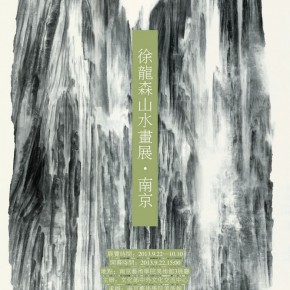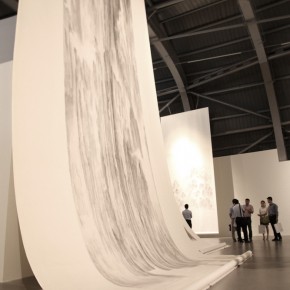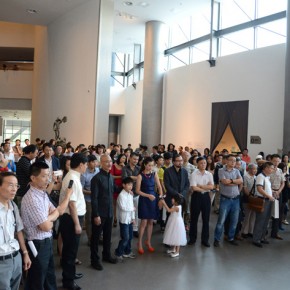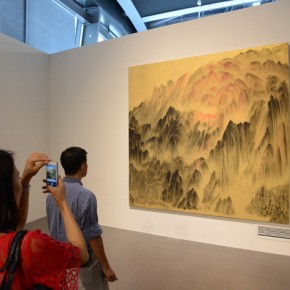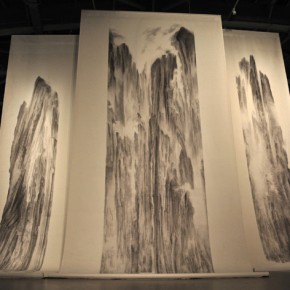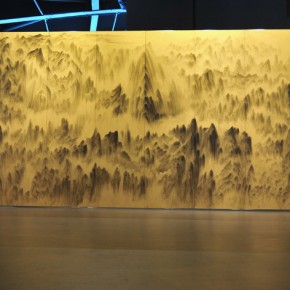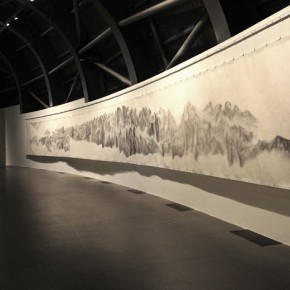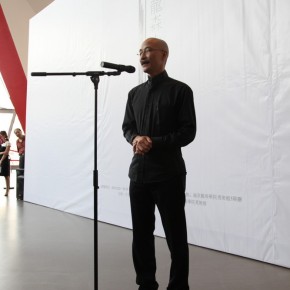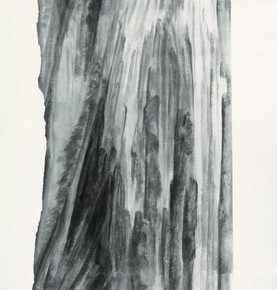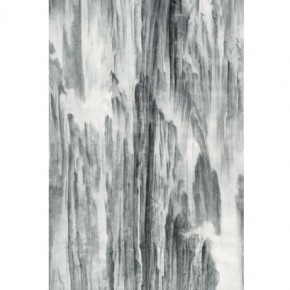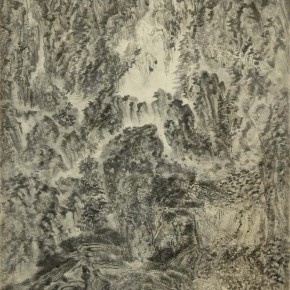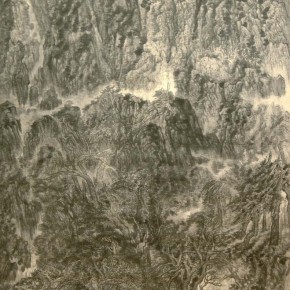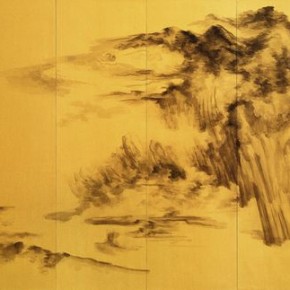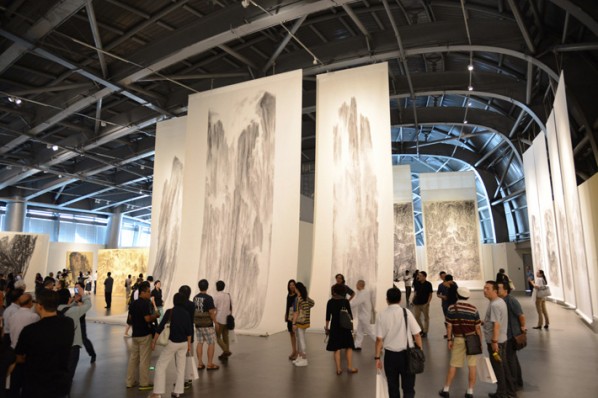
Hosted by the Center of International Cultural Exchange at the Ministry of Culture, organized by the Art Museum of Nanjing University of the Arts, “Xu Longsen’s Landscape Paintings · Nanjing” officially opened at 15:00, on September 22, 2013. The exhibition presents more than 50 works by Xu Longsen in the recent years, including “Solo Peak Series”, “The Higher Mountain the Better Series”, “Clouds and Mountains Series”, “Ancient Artistic Conception Series”, “Salute the Heritage”, etc.
At the opening ceremony, Ma Da, Deputy Director of the Center of International Cultural Exchange at the Ministry of Culture initially gave a speech, and then Liu Weidong, Vice President of the Nanjing University of the Arts said: “The exhibition provides an opportunity for exchange and learning, completing the transformation between the traditional and contemporary, while offering a new aesthetic habit, Xu Longsen’s landscape paintings will become a cultural coordinate for the city, and even an ethnic group.” Zhang Qing, Director of the Department of Research and Planning of National Art Museum of China, gave a speech on behalf of Fan Di’an, Director of National Art Museum of China: “Xu Longsen’s spiritual demeanor is amazing, to make people look up, creating a new connotation, adhering to a dialogue of wisdom, to make an important contribution to the position of Chinese art in the world.” Followed by Xu Longsen’s speech, thanking for the support from the organizer, Director of the Art Museum of Nanjing University of the Arts and the team, and so on; Li Xiaoshan, Director of the Art Museum of Nanjing University of the Arts eventually announced the opening of the exhibition.
Renowned for his huge and delicate pen and ink paintings, Xu Longsen is a famous painter who organized large-scale solo exhibitions in Europe and America, such as The Palace of Justice in Brussels, Picasso Studio in Paris, Museum of Roman Civilization, Brunei Gallery at University of London, Kansas City–Nelson-Atkins Museum, etc., in recent years.
Open public viewing is the subject of modern society, where Xu’s landscape paintings not only revive the important quality of landscape painting that is “forceful and unrestrained, candid and broad-minded”, creating a huge and candid style of new civilization according to the idea of “honesty and innovation”. His landscape paintings not only consider “elegance”, “beautiful”, “dull and naive” in the traditional literati’s concept as an aesthetic pursuit, but also donates to the exploration of effective expression of the display and the extension of pen and ink in a modern architectural space.
In recent years, Xu had tried many times to create ink paintings on golden paperboards, as well as the use of screens and fans, hand-rolled to offer an exploration of various forms, the structure and form in the landscape paintings become more free, an interest which is beyond the image.
As the famous critic Li Xianting said: Xu Longsen’s “landscapes imitate Tao” “his aesthetic subjects are clear and pure, denying feeling and desire, tasting and experiencing the deeper meaning and life spirit in a non-materialistic and irrational aesthetic mentality”, in awe of nature, gaining the quietness and calmness as in a “deep pool and high mountain”, such aesthetic spirit often appeared in the early era such as the landscape paintings of Song Dynasty. Small paintings of feeling and landscape are closer to humanity. But, in modern society, people maybe require more reverence for nature, and the spiritual comfort produced harmonious living and spiritually to communicate with nature.
Li Xiaoshan, Director of Art Museum of Nanjing University of the Arts wrote in the foreword to the exhibition: “People often have a misconception that only when ink painters have a deep traditional foundation, can they have an innovative qualification. Sometimes, Xu Longsen would like to show people the versatile: techniques, pen and ink, artistic attainments, etc., which, I think, is a residue of prejudice. Wu Guanzhong had a nutshell: Brush and Ink means nothing. Xu’s creations of giant sized landscape paintings reflect the successful transformation of landscape painting into contemporary art, actually proving to himself that all worldly opinions are obstacles for development. All the past have been foregone conclusions, while everything in the future is expanded into an unknown situation, for a mature artist, presence does not make sense, while self innovation is the only guideline.”
The exhibition continues until October 10, 2013.
Translated by Chen Peihua and edited by Sue/CAFA ART INFO


